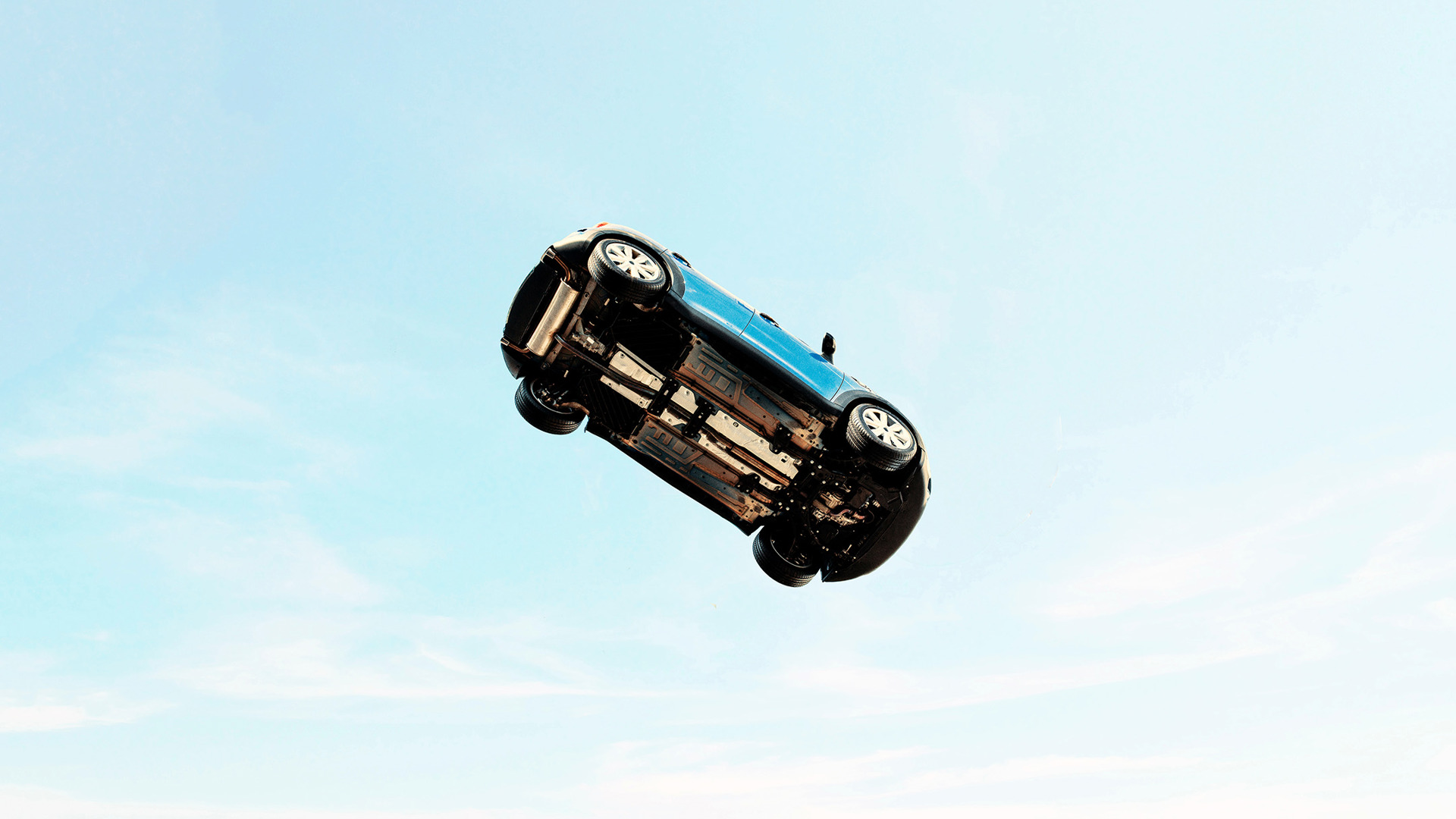“What do they say driving is?” asked racing driver Robin Buck, the lead instructor of BMW Advanced Driving Training, a few years ago. “Hours and hours of total boredom interrupted by a few moments of sheer terror.” The following relates four episodes with moments of sheer terror and lessons you can take from them. Why?
After 15 months of driving nothing but the TV remote, chances are most drivers’ skills have likely ebbed, so maybe it’s time to take a course like Buck’s to get your skills sharp again. If you agree most people’s skills have declined but don’t think that group includes you, that’s pretty typical. That’s why I would like to terrify you with some of my miraculously close calls in traffic.
After reading them, you may be convinced. And if not, at least contemplate the lessons. Shh! I think it’s about to start.
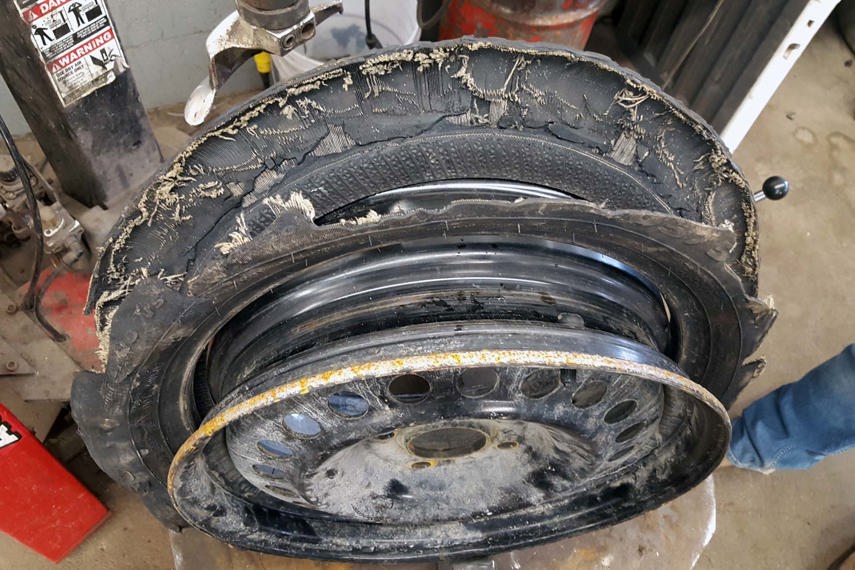
Occasion One
Bounce, wobble, bounce. “We must be getting close to the Quebec border.” Wobble. “You can feel the holes in...” Kaa-POW! Some rubbery smoke.
And before you have the time to release an expletive, the mighty Tercel is veering towards the gravel shoulder, suddenly missing most of its right front tire. Then, before you can complete that expletive, the unexpected difference in surfaces beneath the left wheels and what remains of the right (all four still exceeding 100 km/h) regurgitates us back onto Highway 401 in circular slow-motion.
Forgive the cliché, but like some ham-fisted ’70s after-school special starring Mason Reese, time slows. Eyes bug out from the shocked drivers’ faces “behind” us, hurtling towards us at speed. Are we about to die? That’s what their faces impart.
But only briefly, because we continue rotating, changing the view.
Hmm, the grass in the median was recently cut. There’s less traffic on its far side. The cars in front of us are farther away than the last time I saw them. My hands are on the steering wheel. Is my foot on the brake? Maybe. All that’s certain is I am not in control of this grotesque carnival ride.
Then, somehow, we’re back on the gravel verge and have come to a complete stop, facing forwards, safely away from the highway and, but for our hammering hearts, unharmed. We’re OK. A miracle.
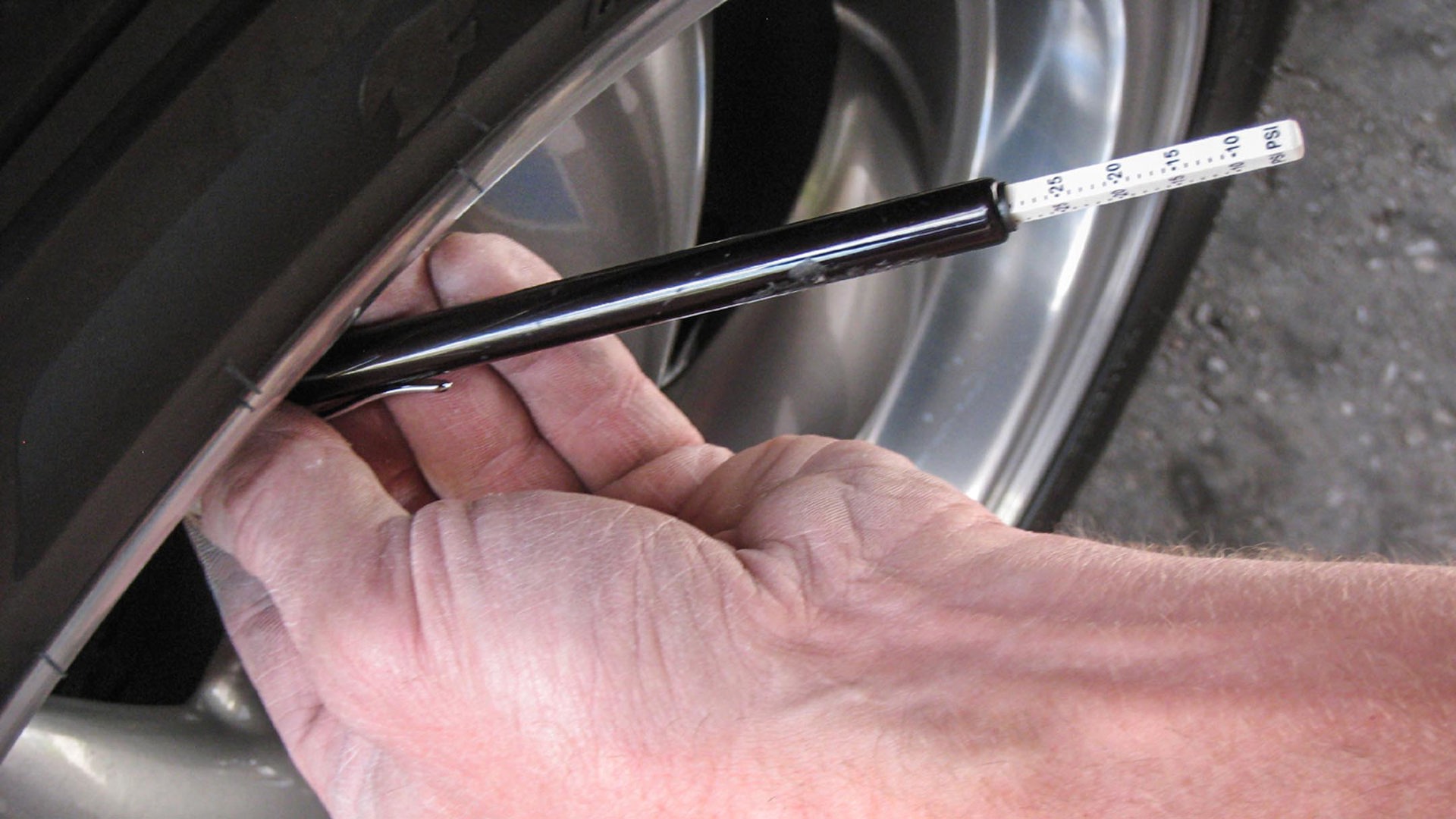
Lesson One A: Check your tires’ air pressure regularly
Many modern vehicles measure the pressure in your tires automatically. Such tech can make you lazy and is no substitute for a physical inspection with a tire pressure gauge. Do it at least once a month and before every long drive. During a rest stop in the middle of one of those drives, feel all four tires. If one is hotter than the others, it’s underinflated because it’s had to cover more distance. Let them all cool for a few minutes before inflating to the recommended level. Not sure what that level is? Read the sticker on the pillar of the driver’s door. (Your tire walls will indicate the same.) Don’t forget to correctly inflate the spare tire too, in case you experience a blowout with a surprise 360-degree tour of the 401.
Lesson One B: “The trick is to know when to pay attention”
More than 24 years after those moments of sheer terror, Buck is telling a roomful of mostly middle-aged learners about the different types of attention we use when we drive. With experience, much of our driving becomes unconscious. For example, have you ever arrived at work and realized you can’t recall a single moment of the drive there?
You could say that in my younger days, I simply didn’t know when to pay attention. But it would be more honest to say I was an awful driver with the attention span of a squirrel on a meth bender. Speaking of which…
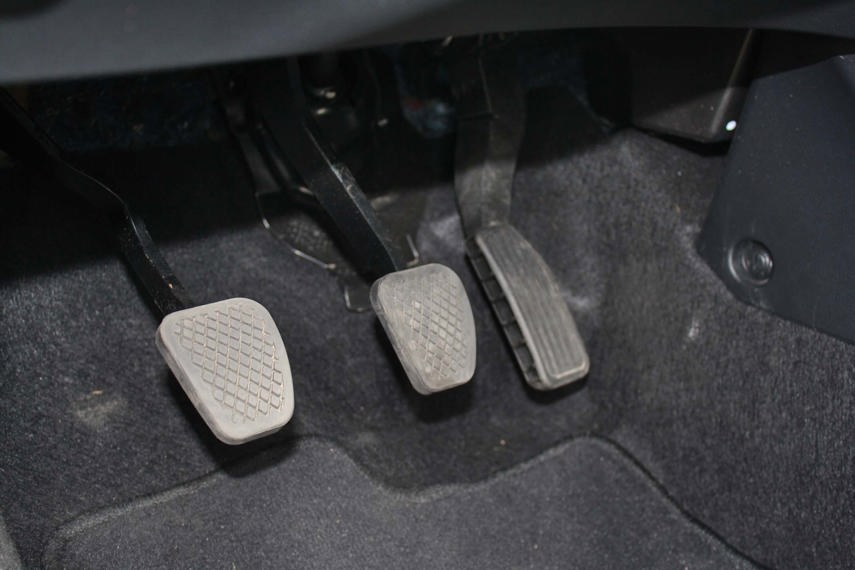
Occasion Two
It’s 1989, a year since the mighty Tercel came, betting well against house odds, to rest on the verge of the 401 near Alexandria, Ont. Right now, it’s rumbling along a neighbourhood street in west Toronto. At least we think it is. The driver’s nowhere to be seen. Turns out, he’s bent down, shifting the floor mat, searching for whatever’s causing a jitteriness in the drive.
“Hmm, nothing’s blocking the brake.” Wait a second. The brake?! My foot’s on the gas but I’m not watching where I’m going. Uh, oh.
Like a nervous meerkat scanning for hyenas, the driver’s head and shoulders emerge above the dash just in time to see that Chrysler K the mighty Tercel’s about to collide with, head-on at 30 km/h. Time slows enough to note: the K’s occupants don’t seem at all relieved to see the Tercel does, in fact, contain a driver.
Whammo! Write-off! Careless driving charge! Wow, what a bonehead, you must be thinking.
Well, to be fair, yes. But you ain’t heard the half of it. You see, the Tercel actually belonged to my fiancée’s mother. And she didn’t know that I’d “borrowed it” till I phoned from the scene of the accident.
Insert your favourite mother-in-law joke here, but the occasion proves a foolproof, if expensive, test for whether your impending in-laws genuinely love you. “Are you OK?” is the first thing she asks, amazingly sanguine about the whole shameful and dangerous mess. An even bigger miracle.
Lesson Two: Secure the floor mat.
If the floor mat is not velcroed and/or clipped into place, it could slide forward, rendering chaos around the pedals. If you’re not sure, pull over ASAP and check.
For years after Occasion Two, I’m a nervous but rarely distracted driver. Progress? Probably. But that’s when I’m driving at all. For eight months of the year, commuting by bicycle in the city is so much easier, faster, and cheaper.

Occasion Three, seven years later
Castle Frank Road is that last 100 metres of tarmac that miserable motorists emerging from the Don Valley Parkway queue on before turning onto Bloor Street. If the traffic light’s green, commuters treat it like the highway they just left, then brake hard for the inevitable cadre of students crossing the street from the subway exit to their high school.
From inside your car, you wouldn’t notice that the little nub of Castle Frank Road is on an incline. You would notice from a bike, though, because you have to pedal extra hard just to merge for the light. From that bike, you’re also aware of how impatient the drivers are to beat an amber light, especially if you have to cross two lanes to reach the left-turn lane.
Picture one of those first beautiful days of spring in the ’90s when you can feel summer about to burst forth. Some students charge across the street in oblivious joy. About to turn left, the car ahead brakes while I, oblivious as the students and pushing hard on the pedals to mount the incline, do not brake. My front wheel rams into his back bumper, catapulting me forwards over his trunk.
The following practicum in physics is farfetched but true.
The car I just collided with is a pristine, vintage El Camino. Remember those ’70s pickup cars with an open bed behind a cab instead of the trunk and back seat? It’s probably out for one of its only rides that year.
My short flight ends with a soft landing on a tight pleather tonneau cover protecting the bed. It’s like flopping onto a trampoline. Not even my shins thwack the gate or walls. Another miracle? Hallelujah!
In the rear-view mirror, the driver’s eyes are wide as street lamps. “I’m OK!” I tell him, though my bike’s buggered.
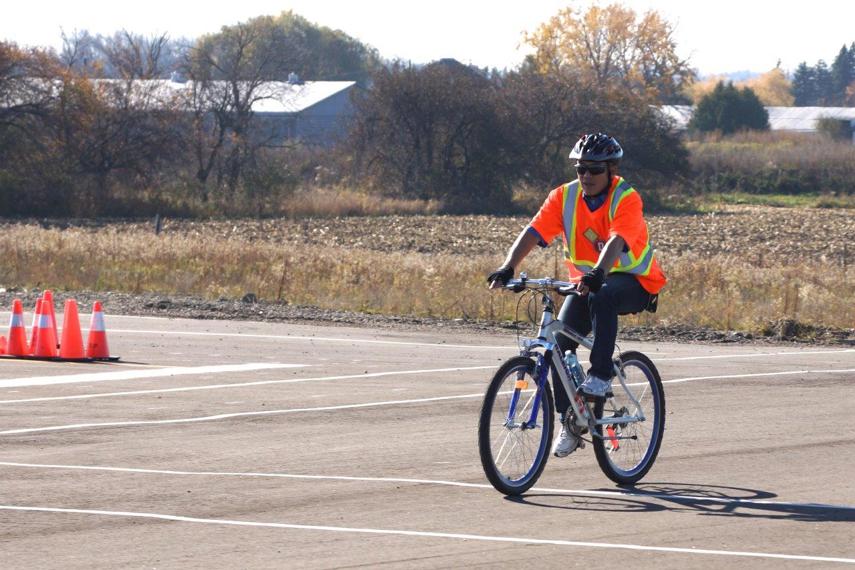
“We’re blind and blinder to our own blindness.” More than 20 years later, I’m attending a Young Drivers of Canada (YDC) event and learn some truly disturbing facts about the people we share the road with every day. Fact: A driver who’s texting is 23 times more likely to crash their car. And while most drivers acknowledge that texting while driving is unsafe, those same drivers also believe they’re better than other drivers. So, it’s wrong for you to text and drive but OK for them… just this once!
YDC shows a 15-second video of some kids playing basketball and instructs us to count the number of times they pass the ball. “Ten!” I smugly announce, afterwards, but the exercise is a diversion. They replay the video and point out – how did you miss this? – a guy walking into the shot in a gorilla suit. He stops in the centre and beats his chest unconvincingly before walking out again. The point? We see what we choose to focus on. Really.
Your eyes aren’t cameras. They’re built to scan your surroundings, lock briefly (whether it’s onto prey, a threat, or a vintage ’70s bumper) then scan again. Regarding that quote about us being blind and blinder to our own blindness, you’d think YDC’s Senior Regional Trainer was speaking metaphorically, but he’s actually explaining how the brain processes what it sees. Here’s another quote from that session: “After just two seconds of focusing on something – that’s only one Mississippi, two Mississippi – your peripheral vision starts to narrow. So, you stop seeing what’s in front of you. It’s how we were designed.”
Lesson Three A: Look forward for two beats, then scan
Remember your eyes change how they function once you’re focused on one thing for longer than two seconds. After noticing that what’s ahead of you isn’t a threat, scan the road at the sides – your car’s windows are see-through for a reason – then return to what’s in front of you for a couple of seconds. Blink and repeat.
Lesson Three B
If you’re on a bicycle, practice this same behaviour but also assume everyone’s trying to kill you.
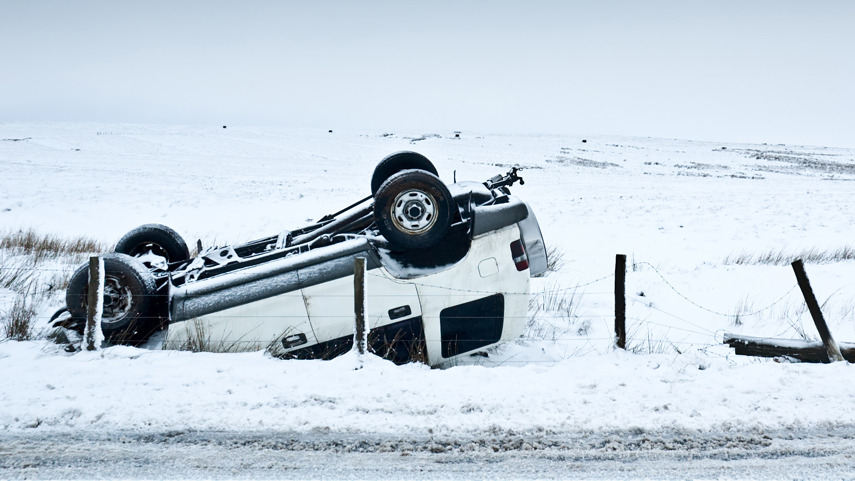
Occasion Four
In winter, the ditches around the remote roads in Ontario’s Grey Highlands are regularly decorated with SUVs on their sides, put there by overconfident drivers who think all-wheel drive (AWD) magically protects them from ice. In summer, it’s not unheard of to find those same ditches filled after SUVs that have spun out across gravel.
There’s an especially wicked S-bend near the town of Creemore, which is more of a backward Z than an S. If you approach it too fast in a tippy 2001 SUV, you’ll experience a speed wobble that becomes too hard to control. You could slide off the embankment, roll hard onto your side, then dangle, strapped by your seatbelt, a gravity-defying four feet above the ground. If you do that with four kids in the vehicle, two of whom aren’t even yours, it may take a while to recover from the guilt.
“It happens at this bit of road all year round.” The police were surprisingly generous. Fortunately, nobody was hurt, but it was an awful experience. I swore off driving for a year afterwards. This was too close for any comfort.
The following year, preparing for a month’s family vacation in southern France where automatic transmissions are common as unicorns, I take lessons on how to drive stick. But I tell the instructor to teach me as though I had no driving experience at all. “Or treat me like I do have experience and it’s all bad.” Best $500 I’ve ever spent.
Lesson Four: Remember all-wheel drive is useless if you’re not driving
What makes all-wheel drive so helpful is that you’ve doubled the number of wheels that are powered, maximizing your traction. But if you brake or even remove your foot from the gas, you’re no longer driving on all wheels; you’re braking or coasting. AWD does not make you invincible, so you still need a set of dedicated winter tires and you need to slow down and drive according to the conditions. AWD does not help you brake any faster.
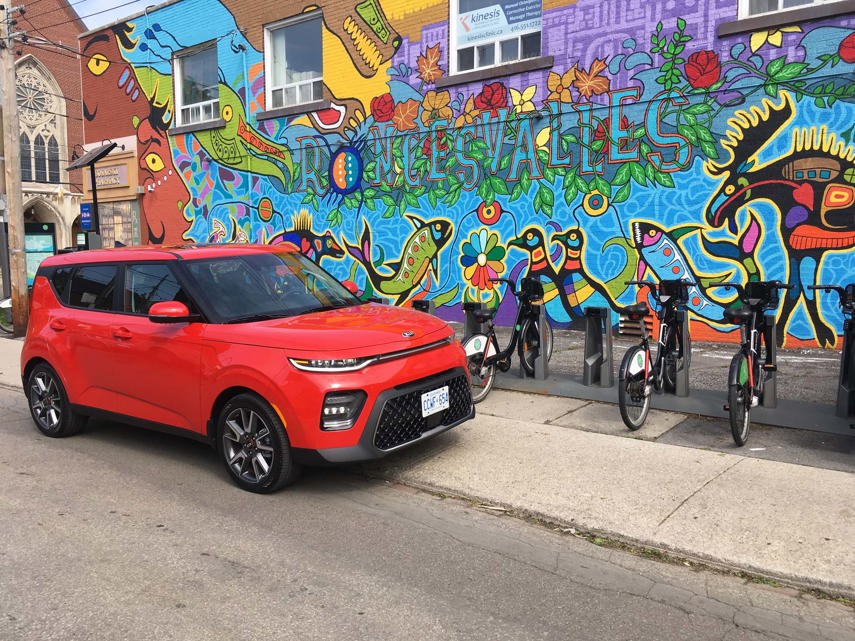
Epilogue, 2 km from the S-bend
A year after those driving lessons taken in my 40s, followed by a safe summer on the narrow bendy roads of the Pyrénées Orientales mountains in southwestern France, there are gales of laughter ringing off our friend’s kitchen. The mother of two of those kids you last saw hanging sideways in the back of my erstwhile SUV is gaping, agog. “But...” she sputters.
“Yes,” I repeat. “I’ve begun reviewing cars.” She listens but can’t quite process that these manufacturers are providing fully insured cars for free – to me. “But …” After two seconds of staring, her peripheral vision has started to narrow.
“But … do they know? I mean, DO THEY KNOW?”
Well, they must know now. And most of them have seen how closely I listen during the many driving events they’ve hosted me at. After these close calls and many driving lessons, it’s safe to say I’m a much better driver now, but don’t let my near-death experiences go to waste.
